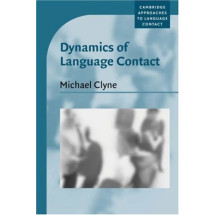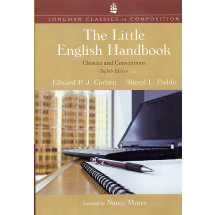Preface and Acknowledgments xiii
Part 1 Preliminaries 1
1 Generative Grammar 3
0. Preliminaries 3
1. Syntax as Science – the Scientific Method 4
2. Syntax as a Cognitive Science 12
3. Models of Syntax 13
4. Competence vs. Performance 13
5. A Clarification on the Word “Language” 15
6. Where Do the Rules Come From? 16
7. Choosing among Theories about Syntax 25
8. The Scientific Method and the Structure of this Textbook 25
9. Conclusion 26
Ideas, Rules, and Constraints Introduced in this Chapter 27
General Problem Sets 29
Challenge Problem Sets 35
2 Parts of Speech 43
0. Words and Why They Matter to Syntax 43
1. Determining Part of Speech 44
2. The Major Parts of Speech: N, V, Adj, and Adv 47
3. Open vs. Closed; Lexical vs. Functional 50
4. Subcategories and Features 52
5. Conclusion 58
Ideas, Rules, and Constraints Introduced in this Chapter 58
General Problem Sets 59
Challenge Problem Sets 63
3 Constituency, Trees, and Rules 67
0. Introduction 67
1. Rules and Trees 70
2. How to Draw a Tree 84
3. Modification and Ambiguity 90
4. Constituency Tests 91
5. Constituency in Other Languages 93
6. Conclusion 98
Ideas, Rules, and Constraints Introduced in this Chapter 98
General Problem Sets 99
Challenge Problem Sets 107
4 Structural Relations 113
0. Introduction 113
1. The Parts of a Tree 114
2. Dominance 116
3. Precedence 119
4. C-command 122
5. Grammatical Relations 126
6. Conclusions 129
Ideas, Rules, and Constraints Introduced in this Chapter 129
General Problem Sets 131
Challenge Problem Sets 138
5 Binding Theory 141
0. Introduction 141
1. The Notions Coindex and Antecedent 143
2. Binding 144
3. Locality Conditions on the Binding of Anaphors 146
4. The Distribution of Pronouns 148
5. The Distribution of R-expressions 148
6. Why Does Binding Theory Matter to Syntacticians 149
Conclusion 151
Ideas, Rules, and Constraints Introduced in this Chapter 151
General Problem Sets 152
Challenge Problem Sets 154
Part 2 The Base 159
6 X-bar Theory 161
0. Introduction 161
1. Bar-level Projections 163
2. Generalizing the Rules: The X-bar Schema 168
3. Complements, Adjuncts, and Specifiers 170
4. Some Definitional Housekeeping 179
5. Parameters of Word Order 180
6. Drawing Trees in X-bar Notation 182
7. Conclusion 199
Ideas, Rules, and Constraints Introduced in this Chapter 200
General Problem Sets 201
Challenge Problem Sets 209
7 Extending X-bar Theory to Functional Categories 213
0. Introduction 213
1. Determiner Phrases (DPs) 214
2. A Descriptive Tangent into Clause Types 217
3. Complementizer Phrases (CPs) 221
4. Tense, Perfect, Progressive and Voice Phrases 223
Ideas, Rules, and Constraints Introduced in this Chapter 234
General Problem Sets 236
Challenge Problem Sets 238
8 Constraining X-bar: Theta Theory 243
0. Introduction 243
1. Some Basic Terminology 244
2. Thematic Relations and Theta Roles 245
3. The Lexicon 250
4. Expletives and the Extended Projection Principle 251
5. Conclusion 253
Ideas, Rules, and Constraints Introduced in this Chapter 254
General Problem Sets 255
Challenge Problem Sets 259
9 Theta Grids and Functional Categories 265
0. Introduction 265
1. Complementizers 266
2. Determiners 269
3. Using Theta Grids for English Auxiliaries 273
4. Main verbs vs. Auxiliaries 284
5. Conclusion 287
Ideas, Rules, and Constraints Introduced in this Chapter 287
General Problem Sets 288
Challenge Problem Sets 292
Part 3 Movement 295
10 Head-to-Head Movement 297
0. Introduction 297
1. Verb Movement (V → T) 300
2. T Movement (T → C) 314
3. Do-support 317
Appendix: Determining if a Language has V → T Movement 318
Ideas, Rules, and Constraints Introduced in this Chapter 318
General Problem Sets 319
Challenge Problem Sets 324
11 DP Movement 331
0. Introduction 331
1. A Puzzle for the Theory of Theta Roles 332
2. Passives 337
3. Case 341
4. Raising: Reprise 345
5. Passives: Reprise 347
6. Inherently Passive Verbs: Unaccusatives 348
7. DP Movement in SVO vs. VSO Languages 351
8. Conclusion 353
Ideas, Rules, and Constraints Introduced in this Chapter 353
General Problem Sets 354
Challenge Problem Sets 360
12 Wh-movement and Locality Constraints 365
0. Introduction 365
1. Movement in Wh-questions 366
2. Relative Clauses 375
3. Islands 379
4. The Minimal Link Condition 382
5. Echo Questions (Wh-in-situ) in English 386
6. Conclusion 387
Ideas, Rules, and Constraints Introduced in this Chapter 387
General Problem Sets 388
Challenge Problem Sets 392
13 A Unified Theory of Movement 395
0. Introduction 395
1. Move 397
2. Explaining Cross-linguistic Differences 400
3. Scope, Covert Movement, and the MLC 403
4. Conclusion 406
Ideas, Rules, and Constraints Introduced in this Chapter 407
General Problem Sets 407
Challenge Problem Sets 408
Part 4 Advanced Topics 411
14 Ditransitives 413
0. Introduction 413
1. The Problem of Ditransitive Verbs 414
2. The Active Voice Head 415
3. Object Shift 417
4. Ditransitives: Reprise 422
Ideas, Rules, and Constraints Introduced in this Chapter 426
General Problem Sets 426
Challenge Problem Sets 428
15 Raising, Control, and Empty Categories 429
0. Introduction 429
1. Raising vs. Control 430
2. Two Kinds of Raising, Two Kinds of Control 438
3. Control Theory 443
4. Another Kind of Null Subject: “Little” pro 446
5. Conclusion 447
Ideas, Rules, and Constraints Introduced in this Chapter 447
General Problem Sets 448
Challenge Problem Sets 450
16 Ellipsis 453
0. Ellipsis 453
1. LF-copying or PF-deletion 455
2. Antecedent-Contained Deletion and Pseudogapping 461
3. Conclusion 464
Ideas, Rules, and Constraints Introduced in this Chapter 464
General Problem Sets 466
Challenge Problem Sets 468
17 Advanced Topics in Binding Theory 471
0. Introduction 471
1. Levels of Representation 472
2. The Definition of Binding Domain 473
Ideas, Rules, and Constraints Introduced in this Chapter 479
General Problem Sets 479
Challenge Problem Sets 481
18 Polysynthesis, Incorporation, and Non-configurationality 483
0. Introduction 483
1. Polysynthesis 484
2. Incorporation 486
3. Scrambling and Non-configurationality 487
4. Conclusion 495
Ideas, Rules, and Constraints Introduced in this Chapter 495
General Problem Sets 496
Challenge Problem Sets 497
19 Merge 499
0. Introduction 499
1. External Merge 500
2. Internal Merge 505
3. Conclusion 506
Ideas, Rules, and Constraints Introduced in this Chapter 507
General Problem Sets 507
Challenge Problem Sets 508
Conclusions and Directions for Further Study 509
References 511
Index 521












